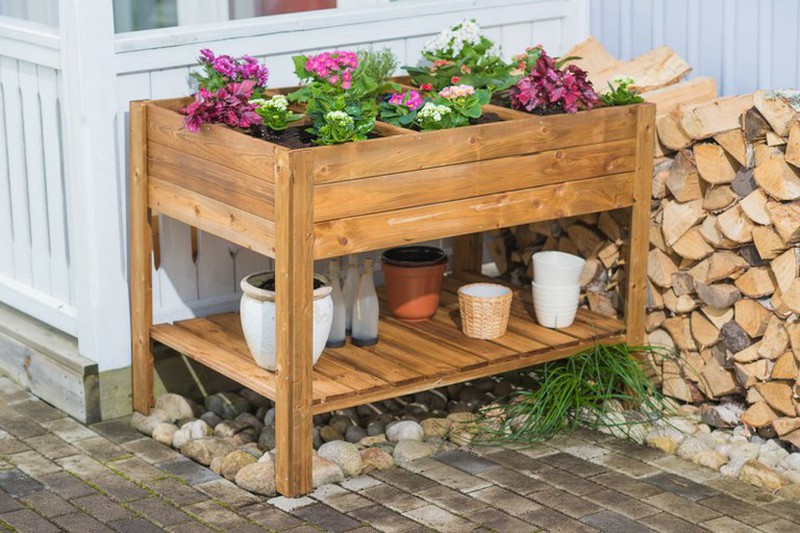Types of Urban Garden
If someone told us what space lives in the city, we could suggest various PoolFun tips on what types of urban garden you might have. There will always be the possibility of cultivating some, including undertaking heterogeneous projects. There are many shapes and sizes that a garden can take, and each one is unique. Their model ranges from potted grass in kitchen windows to community and community projects of true urban agriculture

Orchards in the front garden, on the terrace, in the backyard
Coming home and finding our own harvests is rewarding; and even more satisfying is spending time in cultivating our garden. A garden, a patio, a terrace are wonderful opportunities for germinating vegetables. The influence on our lifestyle and the benefits for our health are immediate. These spaces become a sacred as well as attractive place to spend time, either alone or in the company of friends or family. "You will return to my garden and my fig tree," says the poet Miguel Hernández.
The ancient technique of vertical horticulture
With vertical horticulture we obtain green walls, living walls. The cultivation is carried out in panels, individually or joined together, which are suspended vertically using hydroponic techniques. The structures work attached to the walls or independently.
Vertical orchards endure; They are a good option compared to the use of pots, since they require less space and less maintenance, although they are usually immovable. In professional spaces, even closed places like offices or workshops, this inventiveness offers a touch of freshness, novelty, exuberance and color. Any lobby in the workplace comes in handy: plants don't discriminate. The corridors in the home do not have to escape this technique.
Crop on the windows
Window sills and window sills often allow for the creation of intimate and rewarding gardens. The size of this space and the amount of sun or shade it receives depending on its location determine the type of herbs or vegetables that we will cultivate most successfully; the options are still many.
A rooftop garden
Roof gardens are installed with increasing frequency in modern cities. They not only take advantage of individuals; Businesses use them as a resource to manage rooftop space and provide employees with a healthy place to spend free time.
A practical approach easily turns those spaces into powerful orchards. In this way, the cultivation and use of vegetables becomes part of initiatives aimed at responding to sustainability and environmental challenges. As this type of urban garden becomes popular, it can help manage rainwater and improve air quality.
The roof of any house or building supports one of those. Sure, only the most adventurous could take a chance on a sloping roof. Green roofs are supported by aeroponic, hydroponic, or potted and other container systems. They relate to architectural improvements, temperature control, and the opportunity for recreation; they also provide food and habitats for wildlife. We cannot ask for more, except more cultivation space to achieve a greater impact on the environment.
Flower pots and other containers
That kind of horticulture is the simplest of our Pool Fun harvests. It is the solution when we want to have an urban garden and we lack space. It can be implemented in recycled containers, in addition to the traditional pot. Bathtubs, barrels, cultivation tables like Hortalia's and other utensils can contain a tasty variety of fresh fruits behind the kitchen door, in the alley, on the steps of the stairs; actually in any room of the house or workplace.
The pots are also an ideal accompaniment in any garden that boasts of versatility. We can place pots, jars or other containers of various sizes in rows or in differently designed formations along stairs, on terraces or in the garden.
Community urban projects
It is possible that somewhere in the city, if we look closely, we may see orchards and orchards in vacant lots. These outdoor spaces and of a certain extension support a great variety of crops, such as corn, which are unthinkable in closed or small places. When the initiative is not private, it could be a community or collective project; the initiative of groups of people, sometimes with the collaboration of the municipal authorities. It may even be what is known as guerrilla agriculture.
With one or another variant, if there is something that today is called an urban garden it is that. It is about the use of public spaces or plots belonging to individuals to create orchards for the benefit of the community. A collective sows and a community harvests. Hence a new aesthetic of urban space, a practical concept of land use, a close connection with the environment and a greater environmental awareness, as well as a way to increase solidarity. Needless to say, the benefits to the ecosystem.





Our customers trust us
Opinions of our clients
Receive our news